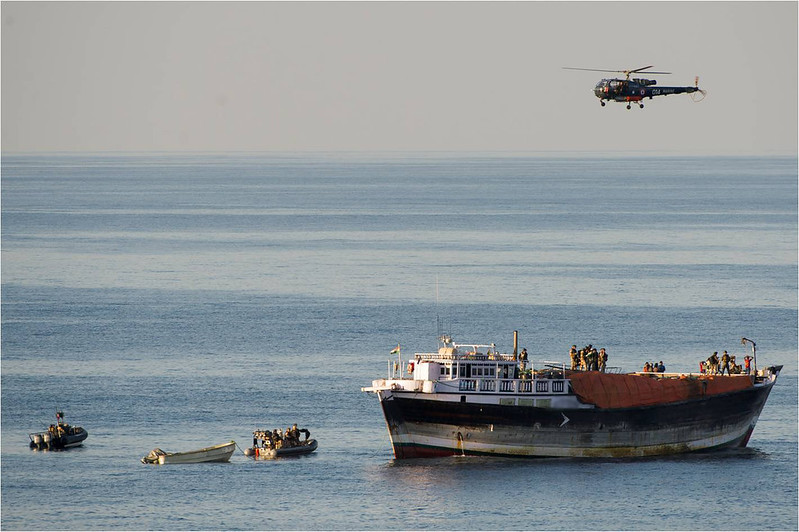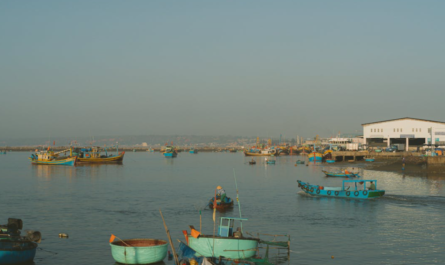The Atlantic Ocean, historically a stage for explorers, traders, and naval battles, remains a vital artery for global trade. Stretching across the Americas, Europe, and Africa, the Atlantic facilitates the transport of goods, energy resources, and raw materials, forming the backbone of modern economies. However, even in the 21st century, piracy persists as a significant threat to this lifeline.
Modern piracy in the Atlantic has evolved, adopting new methods and motives while exploiting vulnerabilities in shipping and trade systems. This article examines the origins, current threats, economic impact, and global strategies addressing piracy in the Atlantic, shedding light on its implications for the maritime industry and international security.
1. The Historical Context of Piracy in the Atlantic
1.1. The Golden Age of Piracy (1650–1730)
The Atlantic has a storied history of piracy, with its golden age characterized by infamous pirates like Blackbeard, Anne Bonny, and Henry Morgan. During this era:
- Targeted Routes: Pirate activity centered around the Caribbean, Gulf of Mexico, and West African coasts, preying on trade ships transporting gold, silver, and slaves.
- Pirate Havens: Islands like Tortuga and Nassau became safe harbors for pirates, offering refuge and supplies.
- Economic Impact: Piracy disrupted colonial trade networks, forcing nations to invest heavily in naval defenses.
1.2. Transition to Modern Piracy
While traditional piracy declined in the 18th century due to stronger naval patrols, modern piracy resurfaced in the 20th century, driven by technological advancements and geopolitical instability.
2. Modern Piracy in the Atlantic: Key Hotspots
Modern piracy in the Atlantic is concentrated in specific regions where economic vulnerabilities and weak maritime governance converge.
2.1. The Gulf of Guinea
The Gulf of Guinea, along the West African coast, is now a global piracy hotspot. Contributing factors include:
- Oil Transport: Rich in oil reserves, the region sees frequent attacks on tankers and offshore platforms.
- Economic Challenges: Poverty and unemployment drive individuals toward piracy.
- Limited Naval Capacity: Coastal nations struggle to patrol vast maritime zones effectively.
2.2. The Caribbean and Central America
While less prominent than in historical times, piracy persists in:
- Smuggling Routes: Pirates exploit drug trafficking routes to target vessels.
- Small-Scale Robberies: Yachts and fishing boats are often robbed by opportunistic pirates.
2.3. The North Atlantic
Though rare, piracy in the North Atlantic occasionally occurs, usually involving well-organized criminal networks targeting high-value cargo.
3. Modern Piracy Tactics and Technology
Modern pirates are resourceful, leveraging technology and innovative tactics to evade detection and capture.
3.1. High-Speed Vessels
- Fast Skiffs: Modern pirates use high-speed boats to approach and board larger ships quickly.
- Multi-Vessel Attacks: Coordinated attacks by multiple skiffs overwhelm security teams.
3.2. GPS and Communication Tools
- GPS Spoofing: Pirates manipulate navigation systems to mislead ships.
- Intercepted Communications: Monitoring radio frequencies helps pirates locate vulnerable vessels.
3.3. Cyber Piracy
- Hacking Ship Systems: Cyberattacks disable navigation and security systems, making ships vulnerable to boarding.
- Data Theft: Pirates steal cargo manifests to identify high-value targets.
4. Economic Impact of Piracy in the Atlantic
The economic repercussions of piracy extend beyond the immediate loss of cargo. They affect multiple sectors of the global economy.
4.1. Shipping Costs
- Increased Insurance Premiums: Ships traveling through high-risk areas face higher premiums.
- Rerouting Expenses: Avoiding piracy hotspots lengthens travel routes, increasing fuel and labor costs.
4.2. Impact on Global Trade
- Disrupted Supply Chains: Delays caused by piracy affect just-in-time delivery systems.
- Price Increases: Higher shipping costs are passed on to consumers, inflating prices of goods.
4.3. Local Economies
- Tourism Declines: Fear of piracy deters cruise ships and tourists.
- Fishing Industry Losses: Attacks on fishing boats deprive local communities of income.
5. Environmental and Humanitarian Consequences
Piracy has broader implications, impacting not just the maritime industry but also the environment and human security.
5.1. Environmental Risks
- Oil Spills: Attacks on tankers often lead to oil spills, causing long-term damage to marine ecosystems.
- Waste Dumping: Pirates sometimes abandon hazardous cargo in the ocean.
5.2. Humanitarian Concerns
- Crew Abductions: Kidnapping for ransom is a common tactic, with crews often enduring months of captivity.
- Violence at Sea: Hostile encounters result in injuries and loss of life.
6. International Responses to Piracy
6.1. Naval Patrols
- Joint Task Forces: Countries collaborate to deploy naval forces in piracy-prone areas.
- Maritime Security Initiatives: Organizations like the International Maritime Organization (IMO) support regional security efforts.
6.2. Technological Solutions
- Maritime Surveillance: Satellite monitoring and drones track pirate activities.
- Ship Hardening: Advanced security systems, such as water cannons and electrified fences, deter boarding.
6.3. Legal Frameworks
- Prosecution Challenges: Lack of jurisdiction often hampers legal action against pirates.
- Regional Agreements: Initiatives like the Yaoundé Code of Conduct enhance maritime law enforcement in the Gulf of Guinea.
7. Future Threats and Challenges
7.1. Climate Change
- Resource Scarcity: Dwindling fish stocks due to warming oceans may drive more people to piracy.
- Rising Sea Levels: Coastal communities displaced by rising seas could exacerbate maritime crime.
7.2. Technological Evolution
- Drone Piracy: Unmanned aerial vehicles may become tools for surveillance and attacks.
- AI in Cyberattacks: Pirates may harness artificial intelligence to launch sophisticated cyberattacks on vessels.
8. Strategies for a Secure Atlantic
8.1. Strengthening Governance
- Regional Cooperation: Coastal nations must work together to address economic and security challenges.
- Capacity Building: Training local navies and coast guards improves enforcement capabilities.
8.2. Public-Private Partnerships
Shipping companies, insurers, and governments should collaborate on:
- Sharing Intelligence: Real-time data exchange helps identify and counter threats.
- Funding Security Measures: Joint investments in surveillance and enforcement enhance maritime safety.
8.3. Community Engagement
- Alternative Livelihoods: Providing economic opportunities for coastal communities reduces the appeal of piracy.
- Education and Awareness: Campaigns highlighting the risks and consequences of piracy can deter recruitment.
Conclusion: Navigating the Challenges of Modern Piracy
Piracy in the Atlantic, while not as rampant as in the Golden Age, poses significant threats to shipping, trade, and global security. The modern pirate is not a romanticized figure but a symbol of economic disparity, geopolitical instability, and technological exploitation.
Tackling piracy requires a multi-faceted approach, blending technological innovation, international cooperation, and community development. By addressing the root causes and enhancing maritime security, the global community can ensure that the Atlantic remains a conduit of prosperity rather than conflict.
As we chart the future of Atlantic trade, the lessons of history and the vigilance of modern strategies will be crucial in navigating the persistent threat of piracy.



